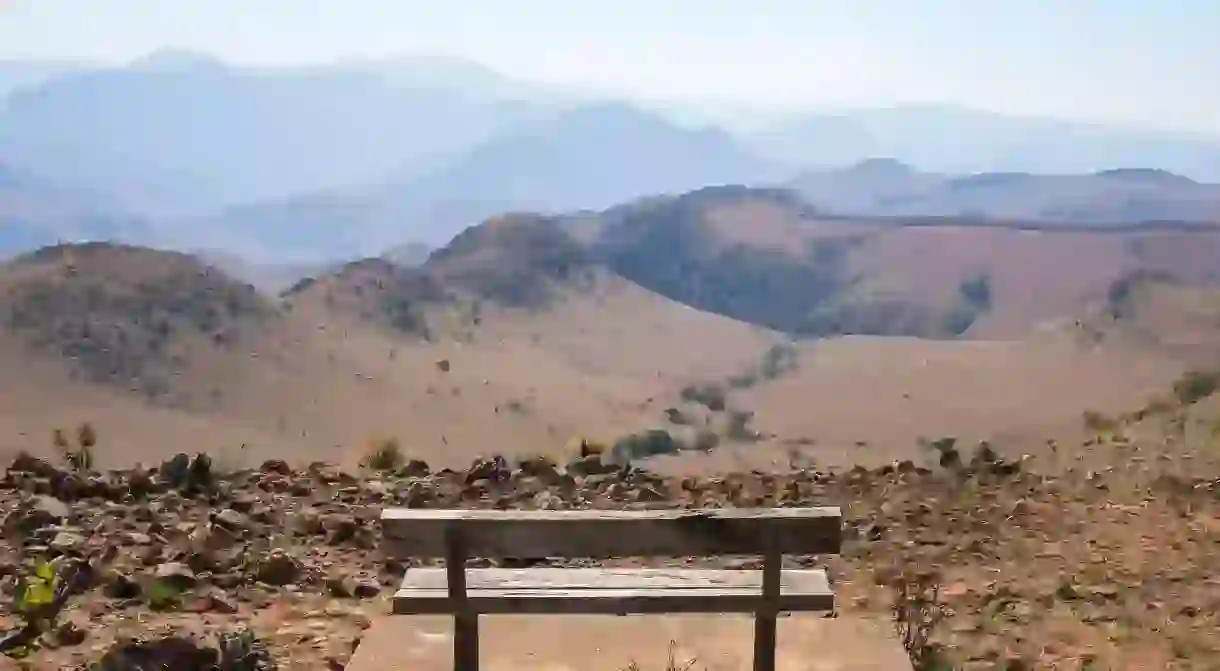The Best Bird Watching Spots in eSwatini

Thanks to its diverse range of habitats, eSwatini (Swaziland) is home to almost 500 species of birds, including several elusive species, and is a breeding ground for one of the rarest breeding birds in Africa: the blue swallow. The best time of year for birdwatching is the rainy season (October to March) when migratory birds return to the country. This handy guide gives a comprehensive overview of where to find key species.
Lowveld and Lubombos
Hlane Royal National Park
Natural Feature, Park

The eSwatini lowveld is packed with different species: during the rainy summer months, up to 100 species might be seen in one day. At Hlane Royal National Park in the lowveld, as well as seeing lions – the national symbol of eSwatini – you can also see birdlife including the Bateleur eagle (Terathopius ecaudatus) and the Southern Carmine Bee-eater (Merops nubicoides) with its deep red features and bright blue crown and undertail. Vultures are among the park’s highlights, with Hlalane being home to the Cape Vulture (Gyps coprotheres), Hooded Vulture (Necrosyrtes monachus), the rare Lappet-faced Vulture (Torgos tracheliotos) and White-backed Vulture (Gyps africanus). Bird-lovers are also likely to see eSwatini’s national bird: the Purple-crested Turaco (Gallirex porphyreolophus) – a beautiful, brightly coloured bird, which is called Ligwalagwala in the siSwati language – and one of the world’s largest flying birds: the Marabou Stork (Leptoptilos crumenifer).
Mlawula Nature Reserve
Hiking Trail

Other good birdwatching sites in the lowveld are the Mlawula Nature Reserve, north of the town of Simunye, and the privately managed Mbuluzi Game Reserve, which borders the park. Birders keen to see the Dwarf Bittern (Ixobrychus sturmii) or Whiskered Tern (Chlidonias hybrida) should pay a visit to these two reserves as these birds aren’t often seen anywhere else in eSwatini. What’s more, Mlawula is the only place in the country you’ll find the Grey Sunbird (Cyanomitra veroxii), The European Nightjar (Caprimulgus europaeus) and the Sooty Tern (Onychoprion fuscatus).
Mkhaya Game Reserve
Natural Feature, Park

Mkhaya is an exclusive private game reserve near Manzini. It’s the only place in eSwatini you’ll find the common Cuckoo (Cuculus canorus) and keen birders might also see the only parrot found in the country – the Brown-headed Parrot (Poicephalus cryptoxanthus) – and the tiny African Scops Owl (Otus senegalensis).
Nisela Game Reserve
Natural Feature, Park
Nisela Game Reserve, near Big Bend, is another private reserve with impressive wildlife and birdlife. There are no dangerous game animals at Nisela, so it’s safe to explore and discover some of the 300+ species of birds on foot, with or without a guide. Look out for the Red-billed Oxpecker (Buphagus erythrorhynchus), the Crested Barbet (Trachyphonus vaillantii) and the Yellow-fronted Canary (Serinus mozambica).
Middleveld
Phophonyane Falls Nature Reserve
Natural Feature, Park

Head to the Phophonyane Falls, about 10km north of Piggs Peak in eSwatini’s Middleveld, and explore its forests to find the green and red Narina Trogon (Apaloderma narina) and the sharp taloned Crowned Eagle (Stephanoaetus coronatus).
Mlilwane Wildlife Sanctuary
Natural Feature, Park

Mlilwane Wildlife Sanctuary and Mantenga Cultural Village are both located in the Middleveld and have an abundance of birdlife. Mlilwane is known for being home to the White-Fronted Bee-Eater (Merops bullockoides), the Red-eyed Dove (Streptopelia semitorquata), the Emerald-spotted Dove (Turtur chalcospilos) and the striking black and white Verreaux’s Eagle (Aquila verreauxii). It’s also the location for spotting the world’s biggest flightless bird: the Ostrich (Struthio camelus). At Mantenga, look out for the Southern Red Bishop (Euplectes orix), Jackal Buzzard (Buteo rufofuscus) and Pied Crow (Corvus albus).
Highveld
Malolotja Nature Reserve
Hiking Trail, Natural Feature

While the highveld doesn’t have as many different types of birds as the lowveld, it’s home to many rare species. This means you have more chance of spotting something that’s difficult to find elsewhere. For example, the mountainous grasslands of the Malolotja Falls (along with Mantenga Falls and Mahamba Gorge) boasts a breeding colony of the rare Southern Bald Ibis (Geronticus calvus). Other notable birds found at Malolotja include: Gurney’s Sugarbird (Promerops gurneyi), the Jackal Buzzard (Buteo rufofuscus), Buff-streaked Chat (Oenanthe bifasciata), Denham’s Bustard (Neotis denhami), the Red-winged Francolin (Scleroptila levaillantii), the Ground Woodpecker (Geocolaptes olivaceus), the Secretarybird (Sagittarius serpentarius), and, of course, the rare Blue Swallow (Hirundo atrocaerulea).













